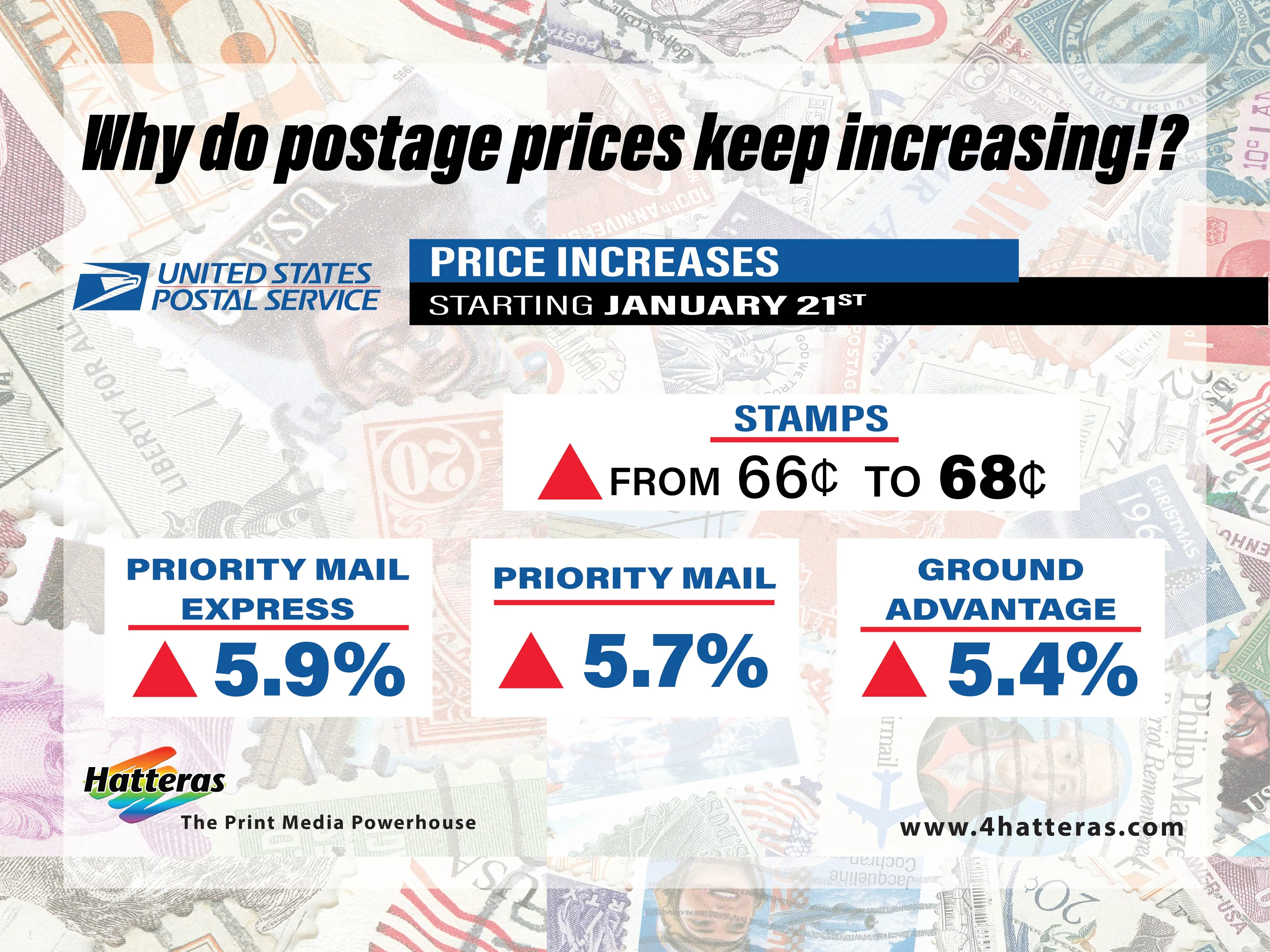On Tuesday, December 26th, 2023, the United States Postal Service filed notice with the Postal Regulatory Commission (PRC) of a mailing services price change to take effect Jan. 21, 2024. The new rates include a 2-cent increase in the price of a First-Class Mail Forever stamp, from 66 cents to 68 cents.
Why Do Postage Prices Keep Increasing!?
It feels like the USPS just raised their rates a few months ago (they actually did raise rates twice in 2023). We all need to use the USPS and postage stamps. Postage stamps serve as the essential currency of mail delivery and the movement of letters, parcels, and packages across the United States. The cost of postage stamps is determined by a variety of factors.
1. Postal Service Operations and Infrastructure
The United States Postal Service (USPS) operates a large network comprising numerous facilities, sorting centers, delivery routes, and workforce to manage the intricate logistics of mail delivery. The costs associated with maintaining, upgrading, and expanding this infrastructure significantly impact postage stamp prices.
2. Fuel and Transportation Costs
The price of fuel directly influences transportation expenses, which constitute a substantial portion of USPS operational costs. Fluctuations in fuel prices affect the overall cost of transporting mail across the country, contributing to adjustments in postage rates to accommodate these expenses.
3. Labor and Manpower Expenses
The USPS workforce includes postal drivers, clerks, delivery personnel, and administrative staff. Labor costs, including wages, benefits, and operational expenses related to staffing, play a significant role in determining the overall cost structure of postal services.
4. Inflation and Economic Factors
Inflationary pressures impact the cost of goods and services across nearly all businesses, including the postal sector. Economic conditions, such as changes in the consumer price index and overall inflation rates, can influence the pricing strategy for postage stamps to maintain financial sustainability for the USPS.
5. Technology and Innovation
Advancements in technology, automation, and mail processing systems impact the efficiency and cost-effectiveness of postal operations. Investments in modernizing equipment and adopting innovative solutions may influence the overall cost structure and subsequently impact postage stamp prices.
6. Delivery Demand and Volume
Fluctuations in mail volume and delivery demand directly correlate with operational costs. Peaks in mail volume during certain periods, such as holiday seasons or promotional campaigns, may necessitate adjustments in postage rates to accommodate increased delivery demands.
The USPS plays a vital role in providing affordable and accessible mail services across the nation. The cost of postage stamps in the United States is subject to a multitude of factors. The USPS navigates a complex landscape encompassing operational expenses, economic considerations, regulatory frameworks, and an evolving market when determining postage rates. As these elements fluctuate, the USPS evaluates and adjusts postage prices to sustain the delivery of mail services throughout the country.

